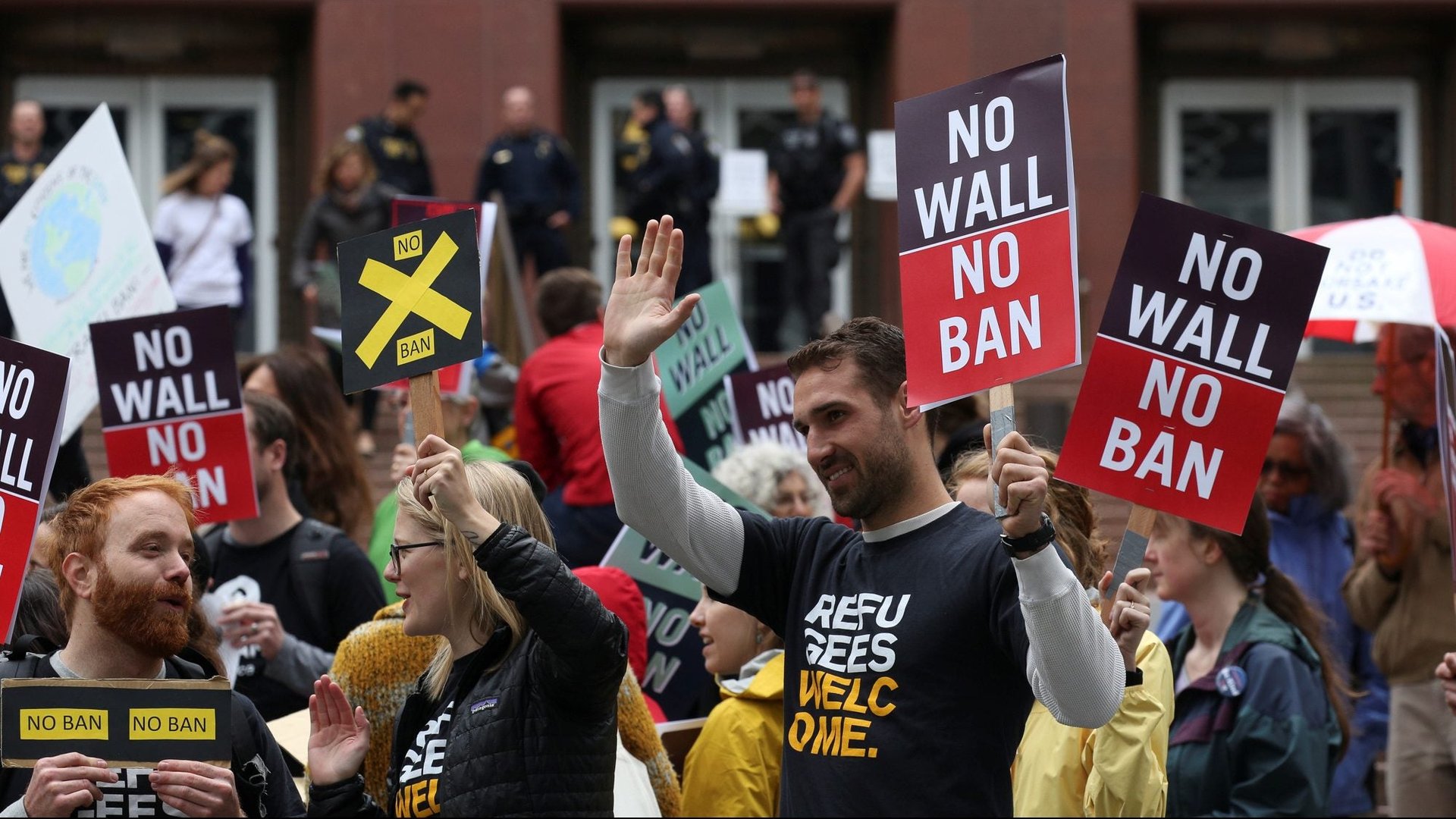The US Supreme Court’s ruling on Trump’s travel ban helps neither refugees nor national security
Donald Trump’s attempt to stop letting citizens from six (originally seven) majority-Muslim countries into the US was one of his first moves as president, and it ran into repeated legal challenges. Today, in a 16-page opinion, the Supreme Court said it would hear the case for the ban later this year. Meanwhile, it’s allowing the government to implement it—but with caveats that have some observers scratching their heads.


Donald Trump’s attempt to stop letting citizens from six (originally seven) majority-Muslim countries into the US was one of his first moves as president, and it ran into repeated legal challenges. Today, in a 16-page opinion, the Supreme Court said it would hear the case for the ban later this year. Meanwhile, it’s allowing the government to implement it—but with caveats that have some observers scratching their heads.
The court said only people without a “bona fide relationship with a person or entity” in the US can be barred. But it was somewhat vague about what a bona fide relationship is. It did give some examples: people with relatives in the US or foreign students admitted to a US university are bona fide, while an immigration non-profit can’t add foreigners as clients in order for them to elude the ban. But it’s not clear what it means for, say, asylum seekers who had existing relationships with such organizations.
“I predict chaos at the border and new lawsuits as foreign nationals and refugees argue that they are entitled to enter the United States,” said Stephen Yale-Loehr, a Cornell University Law School professor, in an emailed statement.
Trump, who last week ordered that the ban be put in place within 72 hours if it was ever unblocked, called the court’s decision “a clear victory for our national security.” In fact it’s anything but clear: Under the court’s terms, for instance, legitimate asylum seekers with no ties in the US can be barred, while potential terrorists who do have ties could get in—assuming they can hide their terrorist connections, something that existing screening already looks for. Indeed, three of the nine justices on the court dissented, arguing that the court should have allowed the ban to proceed in full.
A moot issue?
Finally, there’s the question of why the court has agreed to hear the case at all. The travel ban was originally supposed to be for 90 days only, ostensibly to give the administration time to review vetting policies for travelers. (Why it hasn’t been able to review them in the five months since it first announced the ban is another question.) If the ban is put in place on June 29, those 90 days will be up before the Supreme Court meets in October. At which point the ban will, in theory, no longer be needed anyway.
Why, then, would the justices agree to take the case? One key reason is that it’s so controversial and of such public concern that they couldn’t ignore it, said Jennifer Gordon, a professor at Fordham Law School. Whether the justices decide to definitively answer the complicated legal questions the ban raises is a separate issue.
It’s unclear what the court will ultimately make the case about when it hears it. It could focus on the findings of the Fourth Circuit Court of Appeals, which argued that the constitution bars Trump from implementing the ban. Or it could look at the arguments of the Ninth Circuit Court, which found it was US immigration laws that prohibited the policy. Or it could sidestep both by determining the case is moot, says Gordon.